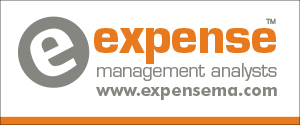Public Health (Alcohol) Bill will slash advertising revenue to Irish media by €20m
Economist Jim Power has published a report entitled ‘The Potential Impact on Irish Media of the Public Health (Alcohol) Bill 2015’, which was commissioned by media owners. The Public Health (Alcohol) Bill 2015 seeks to introduce widespread restrictions to the advertising of alcohol in Ireland. This includes restrictions on the content of advertisements and advertising of alcohol in certain public places (such as public parks, public service vehicles, train or bus stations, near schools etc.). It will also be an offence for more than 20% of advertising space in a publication to be allocated to alcohol products, unless that publication sells or distributes alcohol.
The report analyses international literature on the effectiveness of restricting or banning alcohol advertising, as well as its impact on Irish media. It finds that there is widespread disagreement on the success of advertising bans or restrictions as a means of reducing harmful drinking – and that there is a lack of evidence to justify the restrictions contained in the Public Health (Alcohol) Bill 2015.
The advertising restrictions included in the Bill are estimated to cost the out of home media industry €11m per annum, broadcast media €7m and print media €2m per annum in terms of advertising revenues forgone. This follows eight years of depressed advertising revenues for the Irish broadcasting sector, which is compounded by significant declines in the value of sterling as a result of the Brexit vote. There has been a decline of more than 50% in advertising revenue for newspapers since 2007. The proposed measures rule out advertising of alcoholic products on 88% of existing advertising panels for out of home media.
Commenting on the Report, Economist Jim Power said, “Irish media is already under significant financial pressure from declining advertising revenues and the advent of digital media. These pressures will be exacerbated by the new legislation – which will cost jobs and undermine the ability of the affected Irish media organisations to deliver high quality media content.
“Ireland already has a strict regulatory regime in place that controls the advertising of alcohol. Imposing a new regulatory regime – doubles the amount of regulation on industry – and effectively turns off the advertising revenue tap for Irish media which will cost jobs and damage media output.
“The changes provided for in the Bill will lead to fewer advertisements, which will result in less finance for professional Irish media content, an inevitable reduction in consumer choice and job losses in the area.”
He added: ‘‘Proponents of extreme regulation and restriction argue that banning or restricting advertising will reduce harmful alcohol consumption and protect younger people. The international evidence is not very reassuring in that regard. In 1991 the French authorities introduced alcohol policy law, the Loi Evin, to control the advertising of alcohol. Data from the most recent ESPAD Report shows that drinking among young people continues to be a serious problem and that the strict advertising laws have had little impact on addressing this.
“Latest data on alcohol consumption from the World Health Organisation (WHO) shows clearly that alcohol consumption in Ireland is on a declining trend. This has occurred in the absence of the draconian measures contained the Bill.”
In assessing the appropriateness of the proposed legislation, Economist Jim Power suggests that a number of issues must be considered by Government:
- Is there sufficient evidence to suggest that further regulation is required and if such intervention would have a positive impact on the attitude of children to alcohol?
- How effective are the current regulations in preventing children from seeing alcohol across different types of media?
- Will the proposed changes have an equitable impact across different media and different brands?
- Are the proposed regulations properly targeted, without unnecessarily restricting legitimate advertising to adults?
- Would the impact of the proposed new regulations be proportional to the cost to media and the creative industry?
























